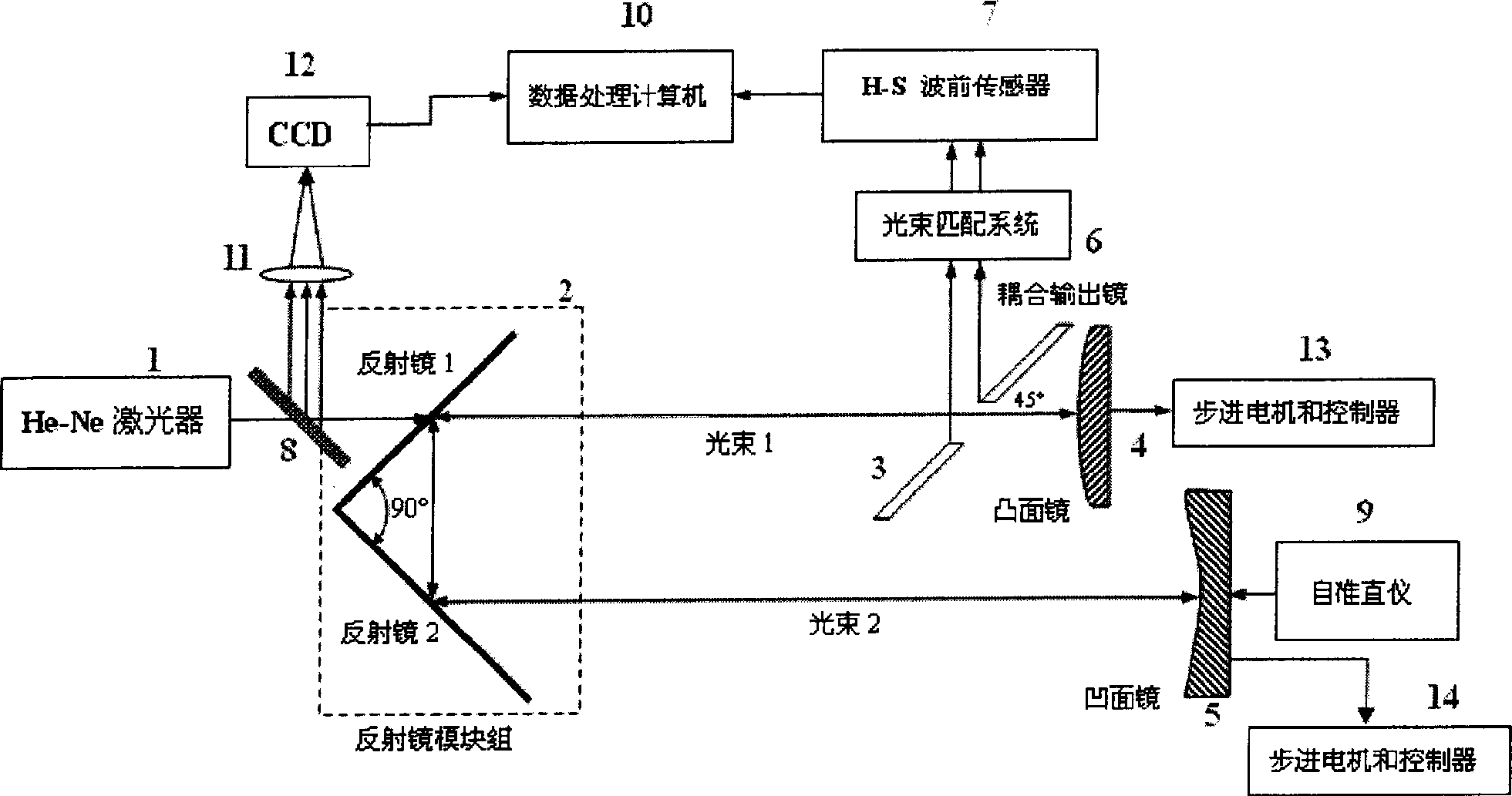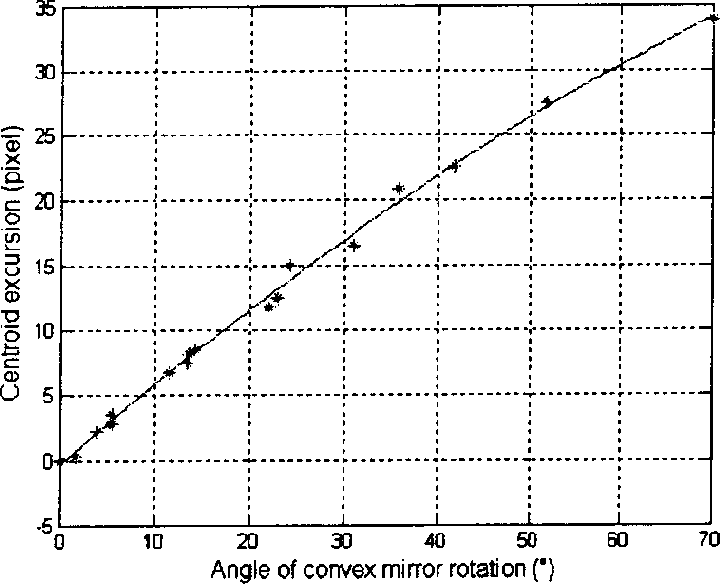Cavity mirror misalignment monitoring system based on positive-branch confocal unstable resonator and monitoring method thereof
A monitoring system and an unstable cavity technology, which is applied in the field of monitoring systems for laser resonant cavity mirror misalignment, can solve problems such as uneven distribution of near-field light intensity, beam eccentricity, and increased tilt aberration, and achieve the goal of shortening the waiting time Effect
- Summary
- Abstract
- Description
- Claims
- Application Information
AI Technical Summary
Problems solved by technology
Method used
Image
Examples
Embodiment Construction
[0030] Such as figure 1 As shown, the intracavity comprehensive aberration detection system of the present invention consists of He-Ne light source 1, unstable cavity mirror, beam matching system 6, H-S wavefront sensor 7, beam splitter 8, autocollimator 9, image acquisition and Data processing computer 10, focusing lens 11, centroid detection CCD12, stepper motor and its controller 13, 14, wherein the unstable cavity is composed of 45° mirror group 2, coupling output mirror 3, convex mirror 4, concave mirror 5 , the angle between the two reflectors in the 45° reflector group 2 is 90°, and the convex mirror 4 is located before the reflector 1 with the coupling hole in the 45° reflector group 2, and the position is close to the concave mirror 5 (the distance between the two is 200~ 300mm is suitable for the following reasons: First, the cavity mirror mechanical adjustment mechanism itself has a certain size, so the spacing cannot be zero; , the convex cavity mirrors are all fa...
PUM
 Login to View More
Login to View More Abstract
Description
Claims
Application Information
 Login to View More
Login to View More - R&D
- Intellectual Property
- Life Sciences
- Materials
- Tech Scout
- Unparalleled Data Quality
- Higher Quality Content
- 60% Fewer Hallucinations
Browse by: Latest US Patents, China's latest patents, Technical Efficacy Thesaurus, Application Domain, Technology Topic, Popular Technical Reports.
© 2025 PatSnap. All rights reserved.Legal|Privacy policy|Modern Slavery Act Transparency Statement|Sitemap|About US| Contact US: help@patsnap.com



